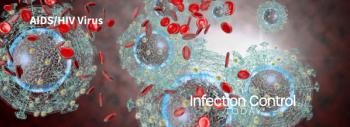
Environment and Time Cause Chemical Changes in Clinical Soil on Medical Devices
Terra Kremer, the senior program manager of microbiological quality and sterility assurance at Johnson & Johnson, and technical lead of the Device Processing Tiger Team, spoke with ICT® about her research on time and efficiency of sterile processing and what is most affecting the industry today.
Not to let the clinical soil dry on medical devices before cleaning/sterilizing them is the key takeaway from a presentation by Terra Kremer, the senior program manager of microbiological quality and sterility assurance at Johnson & Johnson, and technical lead of the Device Processing Tiger Team, at the
During the presentation, Kremer discussed the environmental impacts of clinical soil drying on the instruments, how the device is the responsibility of both the manufacturer and the health care facility, and visual cleanliness is not enough for cleanliness validation.
The decontamination process for manual cleaning and preparation for mechanical cleaning includes removing gross soil, opening, and disassembling instruments, the use of fresh cleaning solution, the use of non-linting clean cloths and appropriate-sized clean brushes, rinsing with critical water, and drying with clean non-linting cloths and critical final water rinse.
Kremer also touched on why this research and then sharing the results with sterile processors are important: “It is easier to teach someone if they know why.” Sterile processors need to know what happens if they do not follow that manufacturer’s cleaning and sterilizing instructions and how it will affect patient safety, so they are more apt to remember and follow those instructions.
Infection Control Today® (ICT®): Please summarize the key points from your presentation on the importance of time and efficiency?
Terra Kremer: Our research looked at the foundational science behind drying of clinical soil after use and before the decontamination process. We looked at 3 key variables—time, temperature, and humidity—to understand how they would affect the soil drying over time.
ICT®: What are the actionable takeaways for sterile processing professionals?
TK: Please do not let the soil dry! It is looking at the instructions for use and making sure that you are staying true to what the manufacturer intended for device cleaning steps. We [at Johnson & Johnson] intend that the device typically is not allowed to dry after clinically used. It is understanding that if it does dry, it changes the equation of what we plan for as manufacturers. The key takeaway is please do not let it dry. But if you do [let it dry], clean it within 8 hours.
What we saw within the data that we presented, is [that] within 8 hours, there is no statistical difference in the chemical changes between what we plan on, which is worst case at a 1-hour dry, and what might happen, [which is] an 8-hour dry. So clean it quickly, if it does happen to dry.
The other point is, if you are not comfortable in the environmental conditions, neither is the device. Thinking about hot temperatures, it is not good to allow soil to be exposed to temperatures greater than the 30 degrees Celsius temperature range.
ICT®: What was the significance of the recent research findings involving point-of-use treatment?
TK: As manufacturers, what we plan for in our validations is that point-of-use treatment is not done. But it is important that [pre-treatment] is because as we see in our data, as the devices are allowed to dry, the chemical changes change the solubility of the soil. What we found is [that] it is really important that in a point-of-use treatment, you're keeping [the instrument] moist, if not removing all of the gross debris that you might see after clinical use.
ICT®: What is the biggest challenge facing the sterile processing industry right now?
TK: I think the biggest challenge facing this industry is the disconnect between the reality and the expectation. [For] manufacturers, when we validate our instructions for use that we provide and expect that those are going to be followed at the health care facility word for word. But the reality is that that is not always happening. And so although we try to plan for the worst case, and make sure that if anyone is having a bad day, that there is some safety factor built into the processing steps, ultimately, understanding that there is a different reality. And then having those people who are processing understand the reality of what their actions might be contributing to. For example, if they wait to clean a device and they allow it to dry, the chemistry is changing, which might increase the cleaning challenge.
ICT®: Is there anything else that you would like to add?
TK: The only thing I would like to add is that the intent of this study—and the 2 that follow it—is for publication. We are hoping to publish by the end of the year. So please look for these publications and use them to help educate within the health care facility on what is happening and why point-of-use treatment is so important.
Newsletter
Stay prepared and protected with Infection Control Today's newsletter, delivering essential updates, best practices, and expert insights for infection preventionists.






